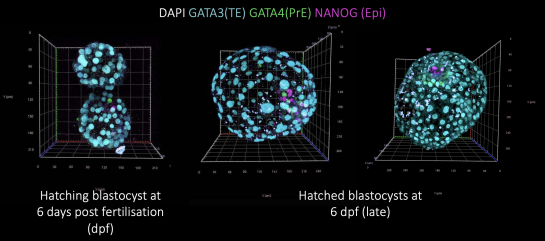Understanding Early Human Development
Human development begins with fertilisation, creating a totipotent zygote that di-vides into a multicellular structure. By day 5, a blastocyst forms, containing:
- Trophectoderm (TE): The outer layer that drives implantation and forms ex-tra-embryonic tissues.
- Inner Cell Mass (ICM): The source of embryonic stem cells and future em-bryonic structures.
This is the first key step in cell lineage differentiation - a process still not fully understood due to ethical and material constraints.


Our Focus
Using human embryos and endometrial models we study:
- Key transcription factors: NANOG, POU5F1, SOX2, CDX2.
- Critical signalling pathways: WNT, BMP4, Hippo.
- Mechanisms of lineage specification: Cell polarisation, positional cues, and compaction dynamics.
- Crosstalk between the embryo and the endometrium: Co-culture of en-dometrial assembloids and human embryos.
By uncovering how human embryos develop at the earliest stages, we aim to im-prove understanding of infertility, pregnancy complications, and stem cell biology.


